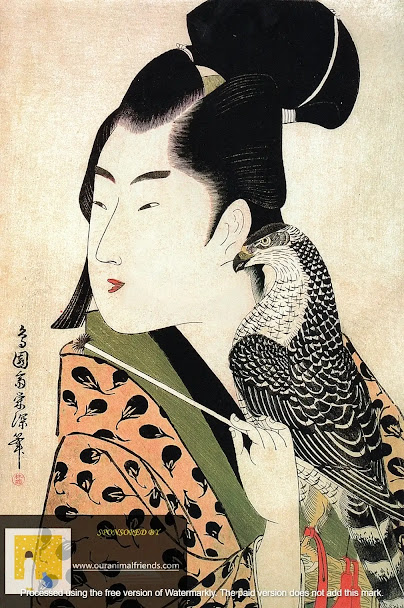Père David's Deer: The Sacred Deer of the Beijing Forbidden City
Milu, also known as Père David's deer, is an attractive deer with a fascinating history. The story of the Milu deer demonstrates how animal conservation initiatives and the dedication of animal advocates can lead to concrete outcomes. Père David's deer narrowly avoided extinction and now there are thousands of them living in various parts of the world.
During the late Yuan Dynasty, Milu deer were nearly exterminated. The emperor commanded the soldiers to seize and relocate the remaining elks to the royal hunting grounds. By the 19th century, only one remaining group of the species was left in the Nanhaizi Royal Hunting Garden in Beijing after becoming extinct in the wild. During the chaos of the Boxer Rebellion in the early 1900s, the park was ruined and numerous deer perished, leading to their extinction in their natural habitat.
 |
| Pere David's deer, also known as Milu, is native to China. It was once found across the country's marshes (Image Credit: 白色瑰宝, Image sourced under Creative Commons license from 白色瑰宝) |
The Unique but Unknown: Père David's deer
The Pere David deer is distinctive in appearance, displaying characteristics that bring to mind different animals such as a camel's neck, a horse's sturdy body, and a donkey's tail. Additionally, their double-layered thick fur allows them to withstand the chilly weather in northern China.Père David's herds are led by a dominant male and are most active at dawn and dusk, which helps them avoid predators and grazing without disturbance.
Unlike other deers, Père David's Deer prefers water and frequently wades or swims in lakes and rivers. This activity is especially noticeable during the mating season when males perform elaborate displays in the water to attract the attention of the doe. They feed on grass or aquatic plants in wetlands and occasionally travel to the sea to consume seaweed.
What sets Père David's deer apart is an unique mating ritual, in which males lock their antlers as if performing a ceremonial dance.
The tale of near extinction and saving at the last moment
Father Armand David, a French missionary, is given credit for the ongoing existence of these deer. During his trip to China, Father David observed Père David's deer and transported a few to Europe, where they were kept in parks and zoos. While disappearing in China in the early 1900s, their numbers flourished in Europe. In recognition of his hard work, the Milu deer was given his name.
In a surprising turn of events, the Pere David deer came back to its homeland in the 1980s. A breeding program to return the deer to its natural habitat was formed via collaborative efforts by China and international conservation organizations. Today, the Milu can once again be seen roaming freely in the wetlands and marshes of China's Dafeng Milu National Nature Reserve.
 |
| It has a large, stocky body with a long neck and legs, resembling a cross between a deer and a horse |
Milu Deers and Chinese Emperors
Milu deer were originally intended solely for the entertainment of Chinese emperors. Throughout history, they were kept in royal gardens and were viewed as a symbol of good luck and fortune. Emperor Zhu Yuanzhang, who reigned from 1368 to 1644, established the Imperial Hunting Park in Beijing, where the Pierre David deer could roam free. Their presence and the presence of other rare animals symbolized the emperor's authority over the natural world.In the Qing Dynasty literary work "Dream of the Red Chamber" (红楼梦), the Milu is also referenced as one of the rare creatures residing in the imperial gardens.
The Milu deers enjoyed special protection and patronage from the imperial court. It is said that the Qianlong Emperor (1711–1799) was particularly fond of the deer and ordered the construction of elaborate gardens and enclosures within the Forbidden City to house them. These gardens, known as the "Milu Yuan" or "Deer Park," became their sanctuary in the following centuries.
 |
| Known as "sibuxiang" or "four unlikes" in Chinese, Pere David's deer was considered one of the four "gentlemen" of the animal kingdom, alongside the dragon, phoenix, and tortoise |
However, historical records also indicate that the Pierre David deer was the primary target during royal hunting expeditions in ancient China. Emperors and nobles would organize elaborate hunts, where they would pursue this and other deers on horseback. This practice probably contributed to Milu's near extinction at the end of the Yuan dynasty.
Pere David Deer in Chinese folklore
According to old tradition, the Milu deer came into existence in ancient times when a horse, a donkey, an ox, and a deer went into a cave in the forest to meditate and, when they awoke from their meditation they transformed themselves into one creature that combined the speed of the horse, the strength of the ox, the donkey's keen sense of direction and the nimble agility of the deerIn ancient Chinese mythology, the Milu was often associated with immortality. Moreover, The Pierre David deer was believed to be under the divine protection of the goddess Guanyin, the Bodhisattva of Compassion.
As the legend goes, the Milu, born from the union of four noble animals, embodied the virtues of strength, wisdom, and agility. Due legendary origin connected with this deer, Chinese Emperors sought its presence in their courts, believing that its presence would bring blessings to their reigns.
As the legend goes, the Milu, born from the union of four noble animals, embodied the virtues of strength, wisdom, and agility. Due legendary origin connected with this deer, Chinese Emperors sought its presence in their courts, believing that its presence would bring blessings to their reigns.



Comments
Post a Comment